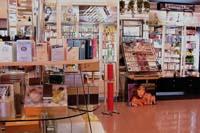Beauty does not need animals

Animal experiments have long been carried out and various tensions have been generated. Some believe that animal testing should be reduced, replaced, and improved as soon as possible. The pharmaceutical, cosmetic and chemical industry is constantly demanding animal free trials to study the toxicity of new products that must be related to man or the environment. We see the need to regulate animal work in laboratories. And the suffering and death of animals generates discussions and concerns.
Many of the cosmetics currently used have been obtained through experiments performed on animals. In fact, more than 38,000 animals are used annually for cosmetic testing in European countries. In 2003, a law was established in the European Union establishing that since 2009, animal cosmetics testing will be prohibited. In addition, from 2013 the sale of cosmetics made through these sessions is strictly prohibited.
Although different types of animals are used in research, laboratory stars are mice, rats and rabbits, among others. The use of these animals is mainly due to their rapid reproduction and the possibility of visualizing the processes in the short term. In addition, being mammals, its organism has remarkable similarities with the human organism. Other mammals are used for similarity.
However, although the results of many animal research generate great hope, sometimes the differences between animals and humans are too great. On more than one occasion it has occurred that a treatment with spectacular results in animals does not have the same influence on humans, or vice versa.
A series of products and drugs, after animal testing, have been tested and marketed in humans and in the long term have been found to cause non-existent problems in animals.

An example of this is the case of a 38-year-old woman who was blinded after giving mascara in her eyes. Later they saw that the mascara had some derivative of coal tar.
Something similar happens with the relationship between cosmetics and cancer. For example, to test whether a cosmetic product can cause cancer it takes five years and 400 rats. More than 50% of the results are positive, but 90% are false positives. There is therefore a concern.
In vivo vs in vitro
To address all these problems, the European Centre for Alternative Method Validation (ECVAM) was created in 1993. Its main objective is to reduce animal testing. Validation of in vitro methodologies based on laboratory cultured cells versus conventional in vivo methodologies. But don't think it easy.
The development of the new methods requires five major steps: first the careful development of the test, then the validation of the test, which includes a series of small tests in the laboratory, then a more formal validity of the test and, finally, the evaluation and follow-up of the test until the approval of the experts.

The Draize test, currently used, measures irritation and damage caused by chemicals. To do this put the chemical in the eyes of the rabbit. But the reliability of this test is very doubtful. Therefore, they have developed several in vitro sessions to replace the Draize test. However, at the moment the Draize test cannot be replaced by a single innovative method.
All these new in vitro sessions have advantages and limitations. Depending on what you want to detect, one session or another will be used. Some are better indicators of irritation, others are suitable for chemicals such as detergents, detection, etc.
ECVAM already has 17 tests under study. Eleven are based on in vitro methods and six others are based on less aggressive in vivo methods. More than 40 tests are pending expert approval. In general, all these alternative methods are divided into three large groups, with the aim of reducing, replacing and fine-tuning animal trials.
These tests measure the acute toxicity of cosmetics and other products, skin irritation and corrosion, eye irritation, skin sensitization, carcinogenicity, etc. If these tests detect that the product can cause some kind of damage, it will be discarded immediately.

There are currently new methods to detect beforehand whether a product can burn the skin, aspirate superficially or cause acute toxicity. Methods accepted. And, therefore, in these cases, the new methods allow definitively discarding animal trials. In other areas, there is still a lot of work to be done, and animals cannot get away from the laboratory or scientists. However, if you follow this route, and according to the results obtained, the next step would be to replace the trials with animals to avoid problems of skin and eye irritation. The new methods are on track to receive the latest approvals.
Among other things, they try animals to develop eye shadows and soaps. Eye shadows, for example, try them with rabbits. In fact, they measure the damage and degree of irritation they cause in rabbits. Solar creams, on the other hand, are tested with acruras and can cause allergies or irritation. All these tests cause serious blood loss in animals. According to statistics, 50% of animals die two or three weeks after the experiments.
Despite the problems, animal experiments still occupy an important place in cosmetic research. It is true, however, that alternative techniques are gradually gaining strength.






